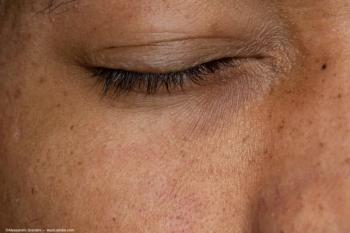
Real-time wavefront aberrometry assists during surgery
Wavefront aberrometry (ORange, WaveTec) used during cataract surgery seems to be an accurate tool for surgeons to predict postoperative visual outcomes. Intraoperative wavefront aberrometry may increase the accuracy of IOL power selection and help avoid postoperative refractive surprises.
Key Points
Chicago-Wavefront aberrometry (ORange, WaveTec) used during cataract surgery seems to be an accurate tool for surgeons to predict postoperative visual outcomes. Intraoperative wavefront aberrometry may increase the accuracy of IOL power selection and help avoid postoperative refractive surprises.
"This is a new and very exciting technology," Eric D. Donnenfeld, MD, said while speaking at the annual meeting of the American Society of Cataract and Refractive Surgery.
"A question that surgeons must ask themselves each day is how to make improvements to past cataract refractive outcomes, improve IOL calculations, and remove the surprise of patients returning the day after surgery with residual refractive errors," he said. "In addition, we need to reduce pre-existing corneal astigmatism and have an intraoperative tool that allows real-time on-the-table measurements of intraoperative results that will allow fine-tuning of the postoperative refraction." Dr. Donnenfeld is a founding partner of Ophthalmic Consultants of Long Island, Rockville Centre, NY, and Connecticut, and clinical professor of ophthalmology, New York University Medical Center.
"This technology may make it possible to implant the desired lens to meet the patient's individual needs regarding ocular aberrations," Dr. Donnenfeld said.
The aberrometry system works, he said, via a beam splitter with a laser inferometer on the surgical microscope. "The laser inferometer shines through relay lenses and creates a fringe pattern on the eye with proprietary algorithms," Dr. Donnenfeld said.
The pattern is projected on a screen for surgeon viewing during cataract surgery. "The system measures real-time astigmatism during placement of limbal relaxing incisions and provides feedback to facilitate placement of more incisions as needed. The surgeon can dial in the toric lens to the desired position. If the lens is not in the desired place, the position can be adjusted while the patient is on the operating table," he added.
Dr. Donnenfeld said he has found that the technology is especially helpful in patients who have undergone a previous LASIK, PRK, or RK procedure in whom it is difficult to calculate the appropriate lens power. The advantages are that the technology can measure the true refractive power of the cornea that is based on the anterior and posterior corneal surfaces, the latter of which is difficult to measure accurately.
"The [wavefront aberrometry] system can measure refraction through an aphakic eye and through a cornea that has undergone a refractive procedure. An accurate measurement is very important in the latter subgroup of patients because the refractive power of the cornea affects the selection of the IOL. A 1-D change in corneal power changes the IOL by more than 1 D," Dr. Donnenfeld said.
He and his colleagues are involved in a phase II clinical study during which they will compare the aphakic and pseudophakic refractive results using intraoperative wavefront aberrometry with the postoperative manifest refraction measured 30 days after cataract surgery. The study ultimately will include 150 eyes at eight sites.
At the time of this presentation, Dr. Donnenfeld had results from six eyes. "In five of the six cases, the patients would have had significantly better surgical results, i.e., closer to the target plano, with better IOL calculation power, if we had used the intraoperative aberrometry device," he said.
Dr. Donnenfeld recounted the case of a patient who had an 18-D IOL implanted. The patient returned for the postoperative examination with –1.0 D of myopia. The aberrometry measurement would have called for a 17-D IOL, which would have resulted in a perfect IOL selection, he said. This type of result would have been obtained in all six of the cases.
"These are the initial outcomes using a new device. I believe that I can clearly state that the results will improve as the machine becomes more fine tuned," Dr. Donnenfeld said. "I think that this device provides the ultimate benefit in cataract surgery that can provide real-time intraoperative aberrometry as a surgical tool that can give cataract surgery the accuracy of a true refractive procedure."
Newsletter
Don’t miss out—get Ophthalmology Times updates on the latest clinical advancements and expert interviews, straight to your inbox.


















































.png)


